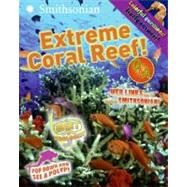
The New copy of this book will include any supplemental materials advertised. Please check the title of the book to determine if it should include any access cards, study guides, lab manuals, CDs, etc.
The Used, Rental and eBook copies of this book are not guaranteed to include any supplemental materials. Typically, only the book itself is included. This is true even if the title states it includes any access cards, study guides, lab manuals, CDs, etc.
Chapter One
What is a coral animal?
Imagine a soft, tube-shaped creature about the size of a pencil eraser. One end is attached to a hard surface so the little animal won't float away. At the other end, a ring of tiny tentacles waves through the water. That's a coral animal, or a polyp.
Are all coral animals the same?
Scientists have discovered more than 5,000 species, or kinds, of coral animals in Earth's oceans. Certain coral polyps absorb, or take in, minerals such as calcium from the ocean water. They use the minerals to make limestone skeletons at the base of their bodies. Colonies of such polyps and their mineral base are called hard corals. Even dead coral skeletons keep the pattern or surface structure that is characteristic for each species and can be used for identification. Other species have polyps that make flexible, leatherlike skeletons and are called soft corals.
Extreme Coral Reef! Q&A. Copyright © by Melissa Stewart. Reprinted by permission of HarperCollins Publishers, Inc. All rights reserved. Available now wherever books are sold.
Excerpted from Extreme Coral Reef! by Melissa Stewart
All rights reserved by the original copyright owners. Excerpts are provided for display purposes only and may not be reproduced, reprinted or distributed without the written permission of the publisher.